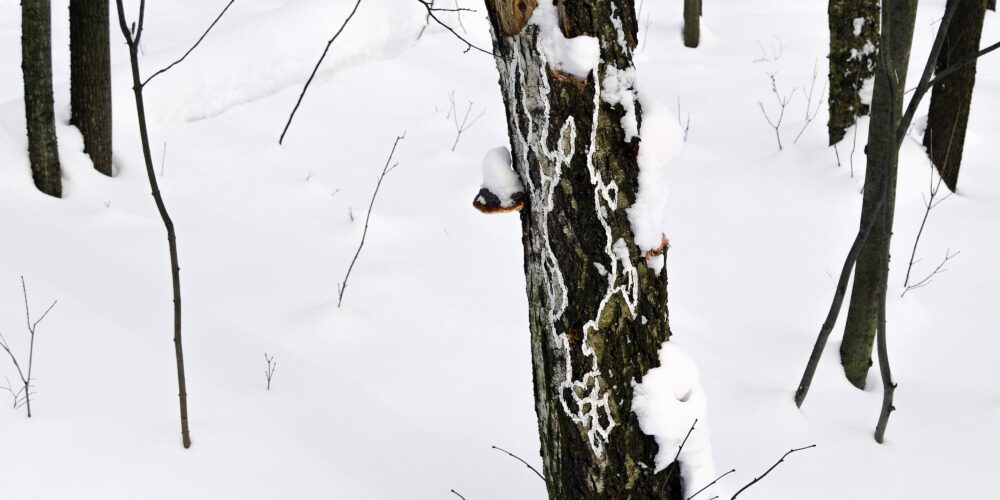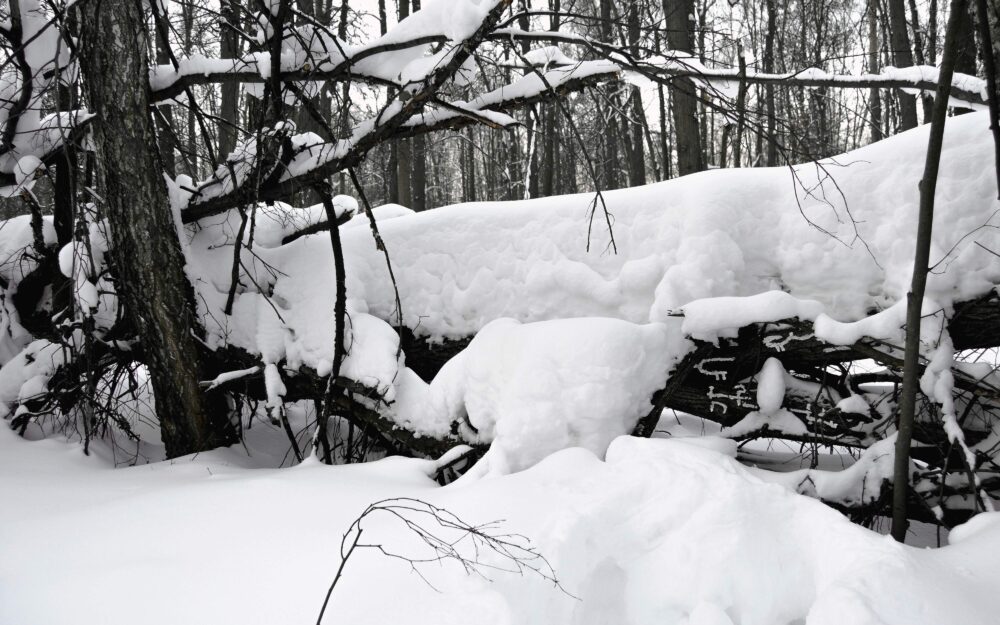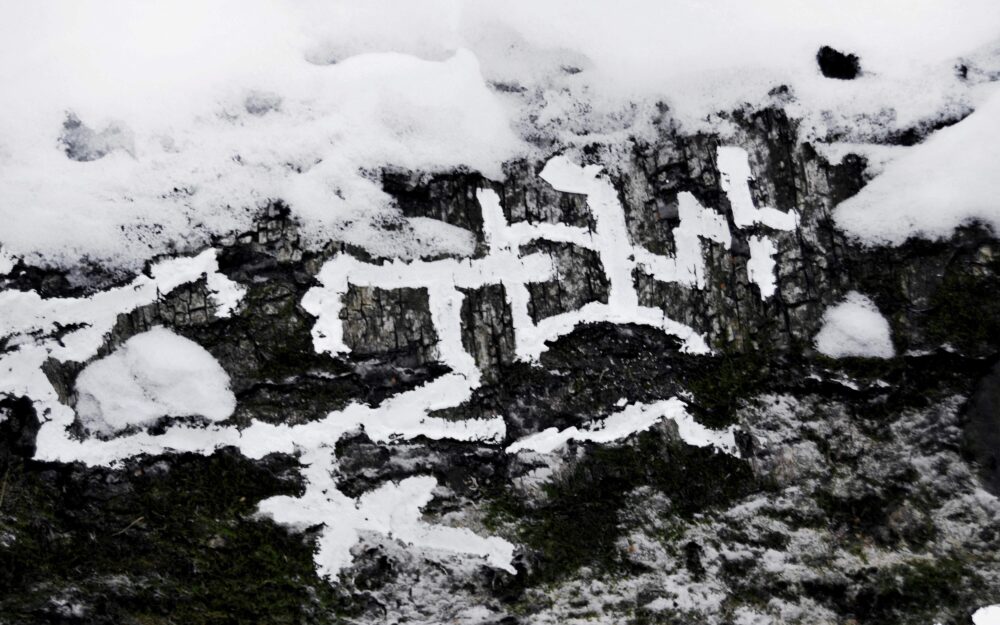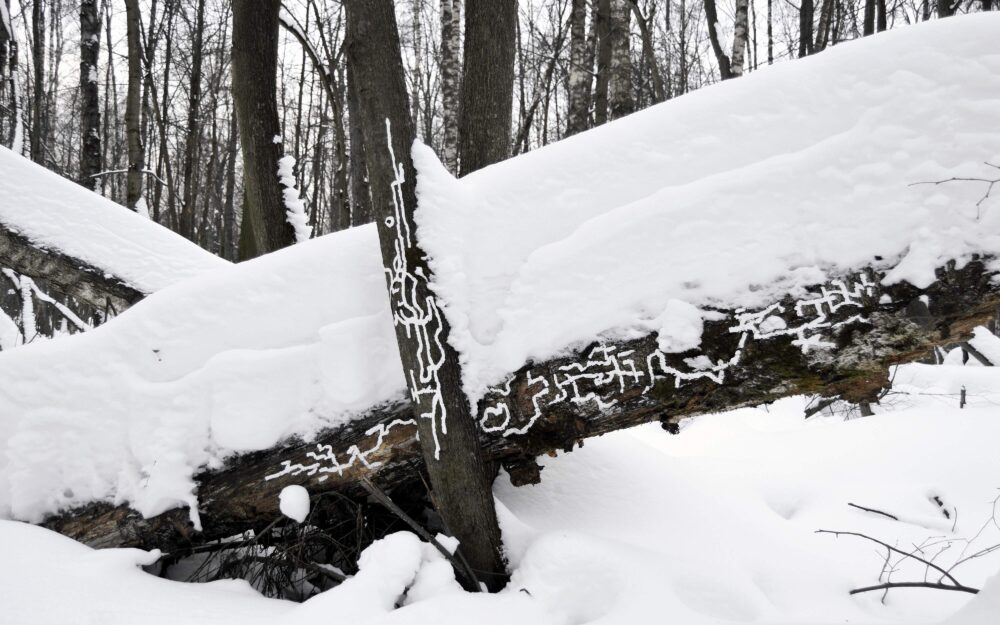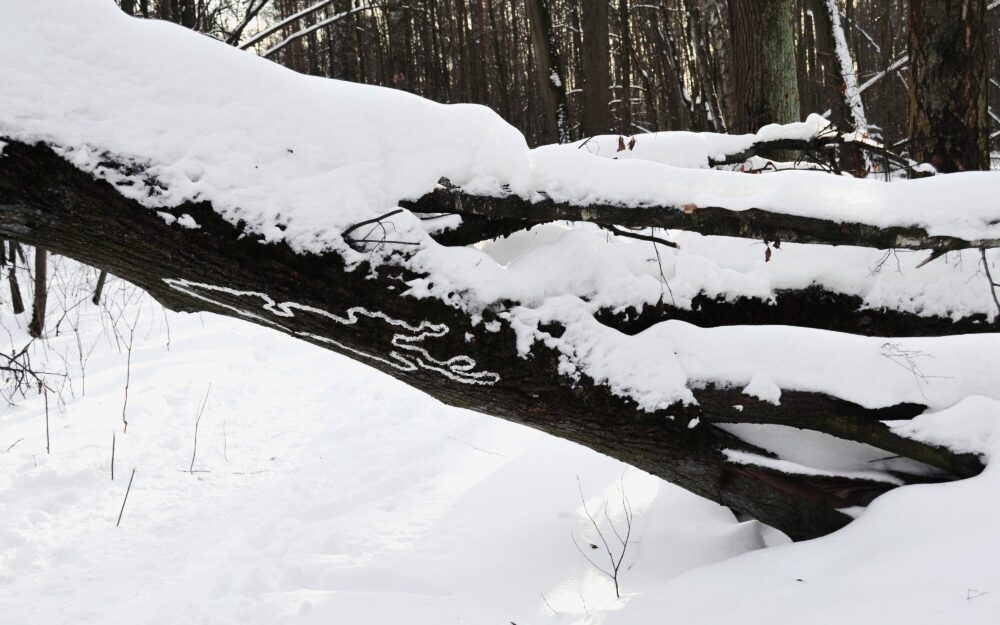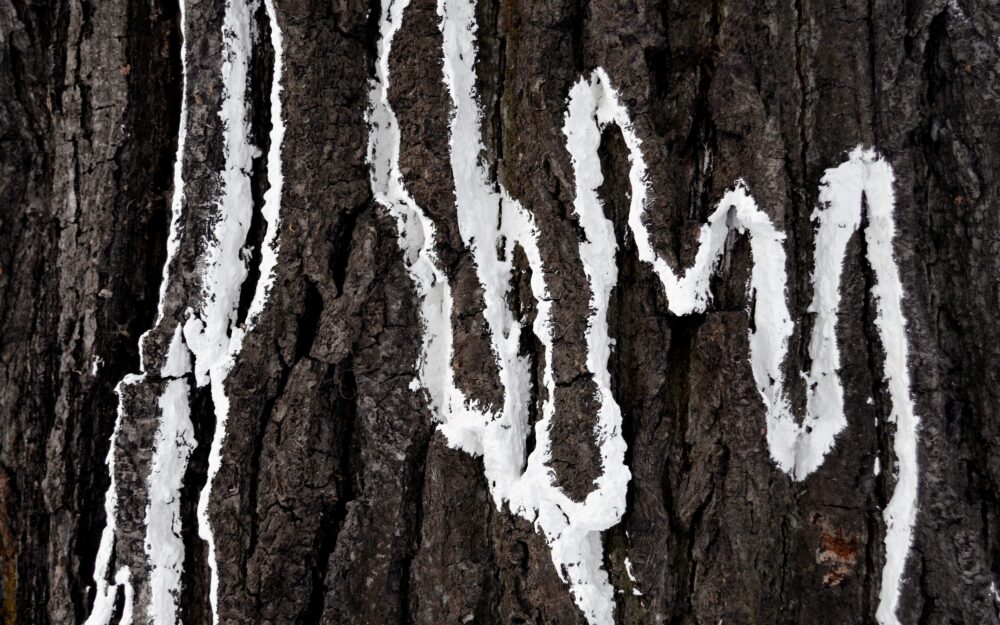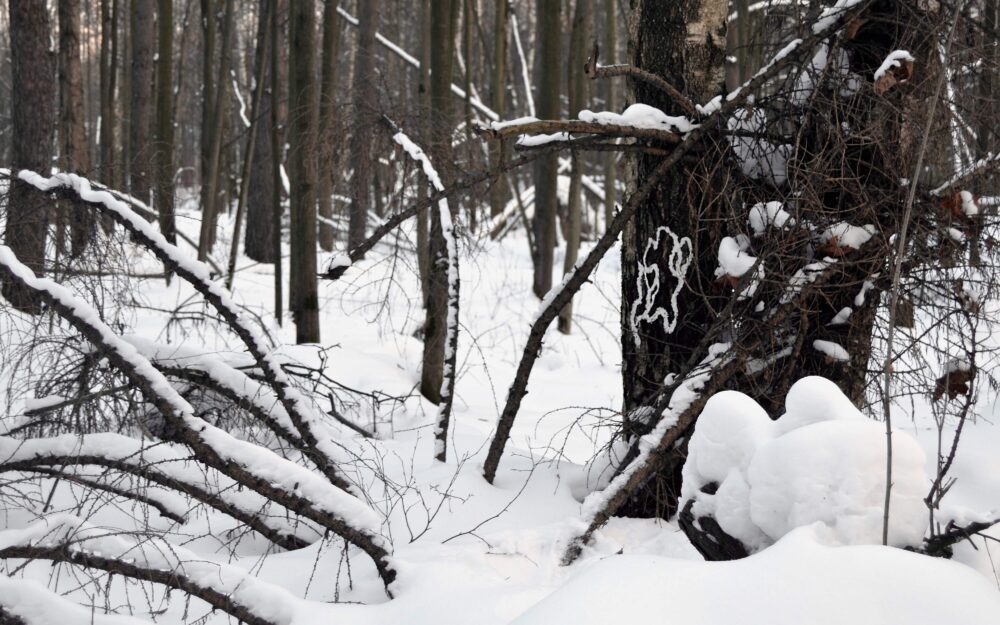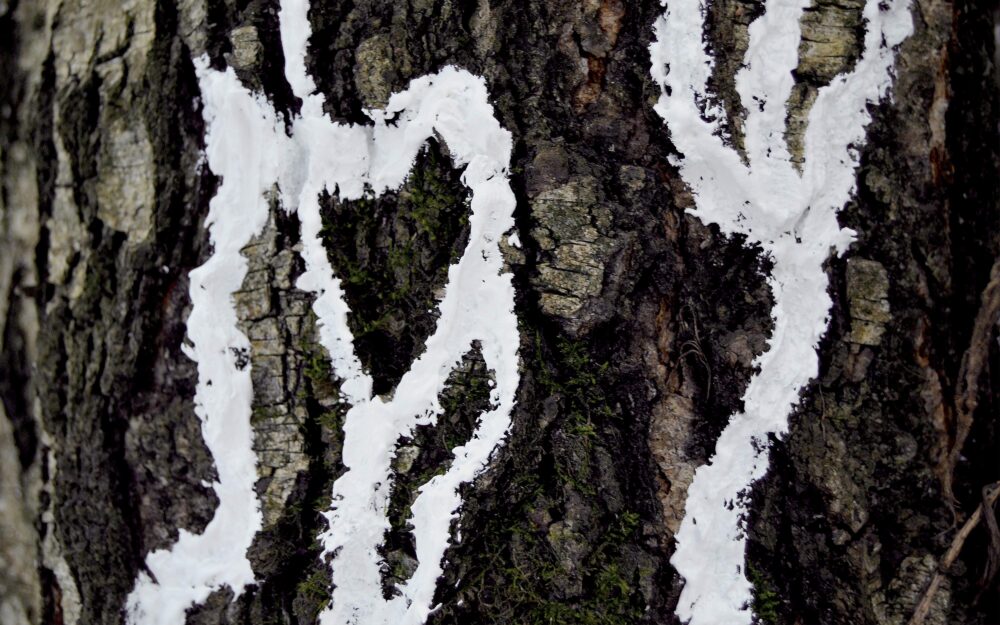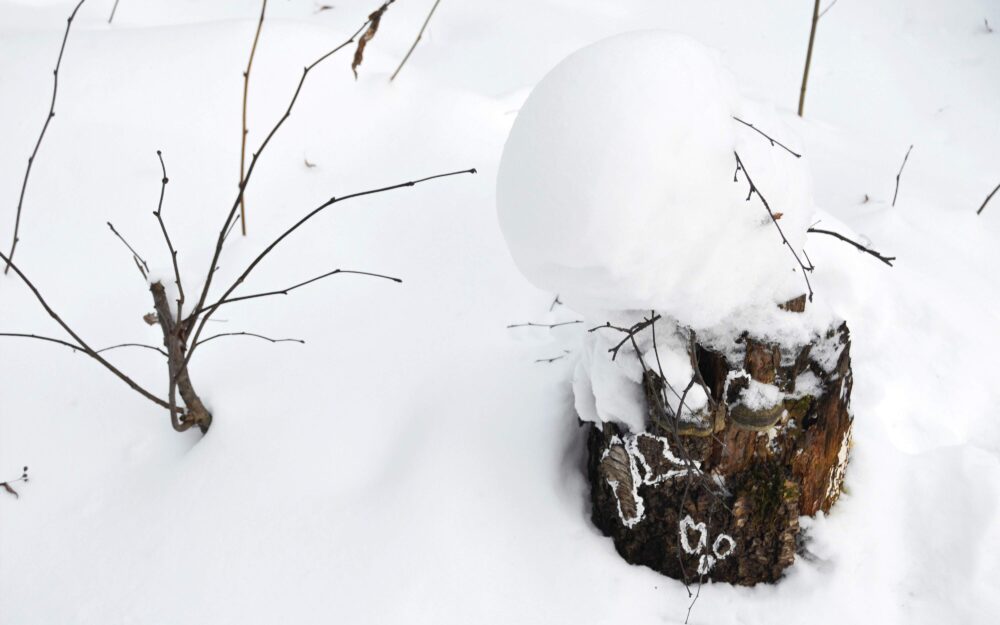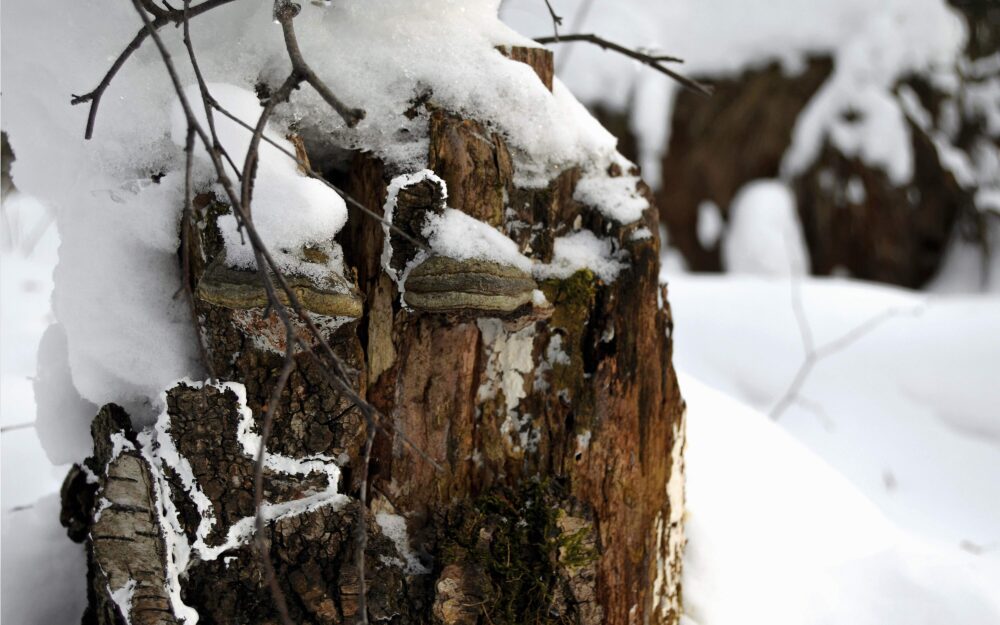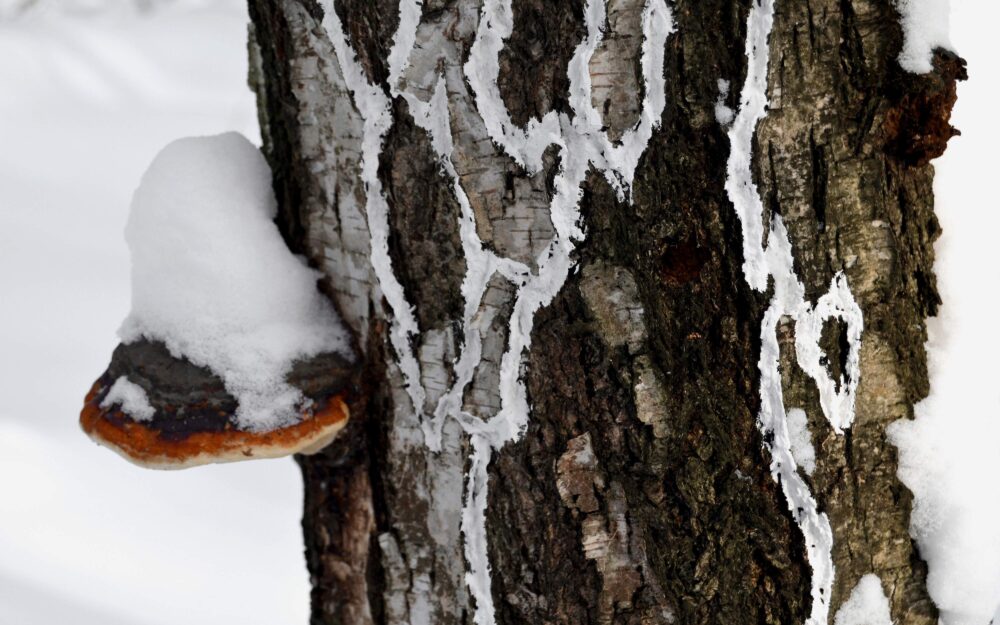According to the legend, Epimenides, a poet and a prophet from Crete, had the peculiarity of turning to reading the past instead of divining the future. His unique sensitivity to the world was also manifested through the ability of his soul to leave the body at will, which he acquired after a 57-year sleep in the cave of Zeus on Mount Ida.[1] After death, the body of Epimenides mysteriously disappeared, and many years later, the skin of the sage was found, covered with mysterious tattooed letters.[2]
The bodies of living beings are testimonies of the past, memories of the attitude to the outside world, knowledge accumulated over a huge time. In long-lived creatures connected to the world in the deepest way, such as trees, this knowledge literally manifests itself in the shapes of their bodies through the patterns of their grooved surface. Like the skin of Epimenides, the tree bark contains a record of the most hidden knowledge of the world and life, the knowledge of past events that no one has seen.
The view of a complex relief of the tree bark as containing an ancient knowledge echoes the philosophy of Henri Bergson in that the bodies of non-human living beings are actually their knowledge of the world. These types of knowledge, designated by Bergson as “torpor” (“fixity”)[3] and “instinct”[4] are inaccessible to humans in principle, since humans are “intelligence”-oriented beings. The essential fixity of the plants appears to the humans as something dormant. This sense-bearing knot is the point where Bergson’s philosophy and the legend of Epimenides intersect.
The human attempts to talk about the world ressemble the attempts to single out signs from the relief of the tree bark. The bark interweaving is older than our letters and languages and, in order to read it, one has to turn to the ecstatic abilities of Epimenides. It is impossible to decipher the revealed sign-letters on the tree bark by the means of intelligence. They can be just singled out, and all we know is that they speak about something.
Drawings on the tree bark are made with engobe, a water-soluble paint made from natural clay. Over time, the rain will wash away the traces of the drawings on the tree and they will completely disappear in the landscape.
References
| ↑1. | Epimenides 3 A 1, A 8, B 22 Diels-Krantz; Diogenes Laertius. 1925. Lives of Eminent Philosophers (Loeb Classical Library). Trans by R.D. Hicks. Cambridge, MA: Harvard University Press. Vol. 1. P. 115. |
|---|---|
| ↑2. | Epimenides 3 A 2 Diels-Krantz. Cf. “Epimenides” in Suda Online. |
| ↑3. | Bergson, H. 1998. Creative Evolution. Trans. from the French by A. Mitchell. NY: Dover Publications. P. 118–119: “Though the plant is distinguished from the animal by fixity and insensibility, movement and consciousness sleep in it as recollections which may waken.”. |
| ↑4. | Ibid. P. 140: “instinct perfected is a faculty of using and even of constructing organized [i.e. organic — M.-S. Zh.] instruments”. |
